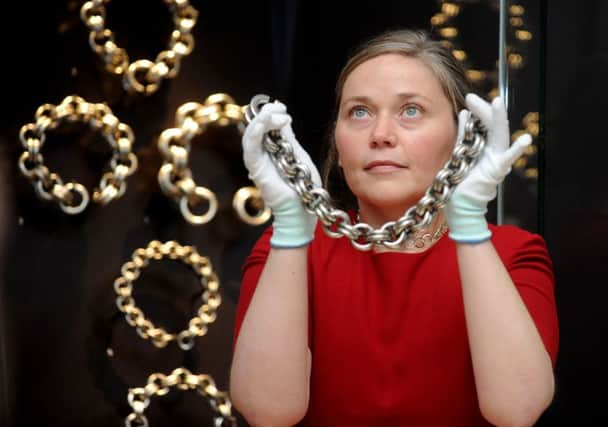Hoards of silver treasure spanning 1,000 years set to sparkle at museum


The fragments, drawn from four vessels of different sizes before they were hacked into pieces, were believed to have been used as a bribe to people in Fife, where young metal detectorist David Hall found them three years ago.
The National Museum of Scotland exhibition reveals the powerful roles silver has played since it was introduced to Scotland by the Romans, through the early medieval period, and ending with the Viking era.
Advertisement
Hide AdAdvertisement
Hide AdThe “biography of silver” show explores how the first silver to arrive in Scotland was used to buy peace and allies beyond Roman frontiers.
It includes some of the earliest examples of silver recycling, known as “hacksilver,” which saw silver melted down and made into new symbols of power, including chains and brooches.
The exhibition recalls how hundreds of years of recycling the same silver led to supplies becoming scarce, diluted and debased by bronze added to make supplies last longer. The first new sources of silver in almost 1,000 years was to arrive with the Vikings.
Exhibition researcher Alice Blackwell said: “Silver was the precious metal of choice for more than 1,000 years of Scotland’s history – it was important in establishing and communicating power and prestige. All the evidence we’ve amassed shows the peculiar specialness of silver in Scotland, compared with England or the continent, where it was always gold. Scotland is different – this was a millennium of silver.”
The exhibition, Scotland’s Early Silver, tells how the hoard recovered at Dairsie in Fife was placed between two ancient standing stones and a small peat bog, suggesting it was regarded as a sacred place at the time. Conservators and curators faced a mammoth “jigsaw puzzle” with more than 300 fragments of silver dating back to the third century AD.
Other highlights of the exhibition, which runs until 25 February, include a hoard of Roman silver coins and objects discovered at Traprain Law, in East Lothian, in 1919.